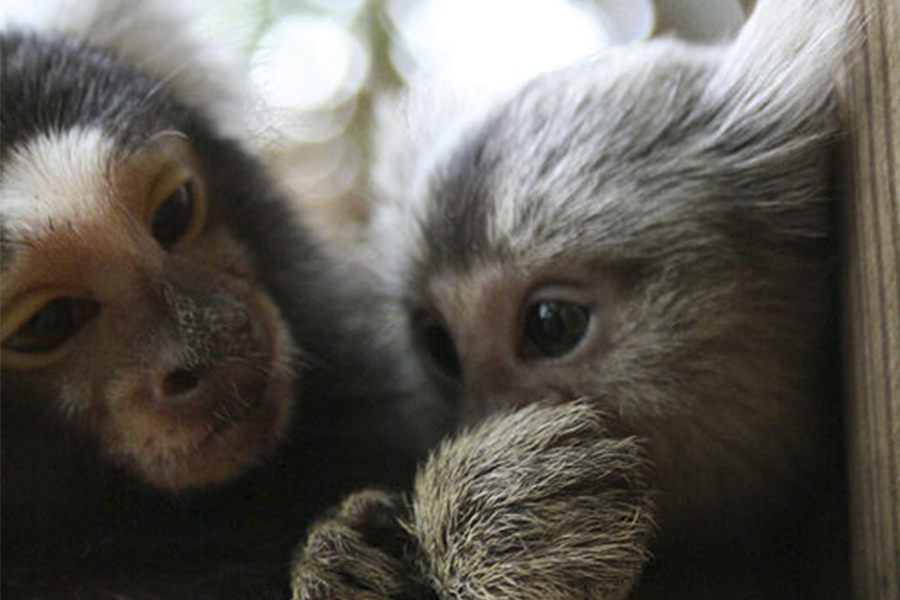
Read the latest Issue
An international consortium has published the genome of the common marmoset in the journal Nature Genetics. Their initial analyses provide insights into this tiny primate’s reproductive system, which is well adapted to multiple births. The marmoset sequence, annotated by researchers at EMBL-EBI and the Wellcome Trust Sanger Institute, is freely available in the Ensembl genome explorer.

Comparing the human genome with those of other primates provides valuable insights into our own biology and into the origins of mammalian life. This latest study shows how the marmoset diverged from other primates, developing genes that give rise to unique reproductive features.
“Unlike humans, marmosets consistently give birth to twins without the association of any medical issues,” says Dr Kim Worley, professor in the Human Genome Sequencing Center at Baylor College of Medicine in the US, who co-led the study. “So why is it OK in marmosets but not in humans, where it is considered high risk and associated with more complications?”
It turns out the marmoset gene WFIKKN1 exhibits changes associated with twinning. The researchers found that the gene may act as a critical switch between multiple and single pregnancies, though it is not the only gene involved.
Chimerism is another feature common to marmosets and their close relatives, though rare in other mammals. Chimerism happens when non-identical twins exchange blood stem cells in utero, which leads to one of them having genetic material from the other.
“This is very unusual. The twins are full siblings, but if you draw a blood sample from one animal, between 10 and 50 percent of the cells will carry the sibling’s DNA,” says Dr Jeffrey Rogers of the Human Genome Sequencing Center at Baylor. “In other animals this chimerism can cause medical problems, but in marmosets it doesn’t.”
The study provides new information about microRNAs, which play a central role in gene expression. The team found interesting differences between marmoset microRNAs and their gene targets compared with humans, some of which are potentially involved in reproduction.
To compare the genomes of different species, researchers need to start with solid reference data. The marmoset team used the Ensembl genome resource, which provides reference information about different species and tools that align them with one another.
“Once we got the annotated marmoset genome sequence into Ensembl, we could narrow our focus to the most potentially interesting regions of the genomes,” says Magali Ruffier of the Ensembl team. “Using comparative genomics you can look at common ancestry among different primates or mammals, and ask questions like, which genes change faster over the course of evolution? Which genes lose their function? Can we find this in other species? Is it expressed in the same way?”
We want to know what makes humans different from other species, and yet most of what we know about other primates on the genomic level is based on human data.
Having narrowed their question down from billions of DNA base pairs to thousands, the consortium researchers could test their questions experimentally.
“One challenge in this kind of research is that we want to know what makes humans different from other species, and yet most of what we know about other primates on the genomic level is based on human data,” adds Bronwen Aken, Primary Analysis Coordinator on the Ensembl team. “Once we have more information on other primate species’ gene expression, protein sequences and interactions, we will start to get a clearer picture of how and why marmosets, humans and other apes evolved the way they did.”
This post was originally published on EMBL-EBI News.
Looking for past print editions of EMBLetc.? Browse our archive, going back 20 years.
EMBLetc. archive